光纤耦合激光器
VL Quick-Connect Type Fiber-Coupled Laser
Precise Coverage + Flexible Integration
- Multi-spectral Coverage and Scenario Adaptability of Precise Power Gradient
- Stability Breakthroughs Enabled by CTP Packaging Technology
- High Compatibility and Customization Capability
- Industrial-Grade Reliability Design

VL Quick-Connect Type Fiber-Coupled Laser
Compact and lightweight (Φ8mm diameter), suitable for scenarios where the internal space of the equipment is limited; stable power (10000-hour lifespan), meeting the long-term plate-making requirements of UVCTP.
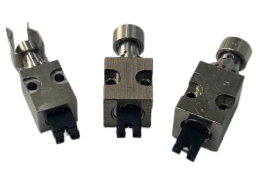
VL Quick-Connect Type Fiber-Coupled Laser
Cuboid planar structure, with a heat dissipation area approximately 20% larger than that of A-1. It can be attached to metal heat sinks to avoid power attenuation caused by high temperatures; its installation stability is better than that of cylindrical ones, and it is resistant to equipment vibration.
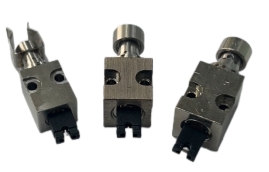
VL Quick-Connect Type Fiber-Coupled Laser
It has a cube symmetric structure, with optimal resistance and vibration resistance, and can be mounted with heat sinks in multiple directions; the standardized 10mm side length is compatible with the universal fixing holes of UVCTP production lines.
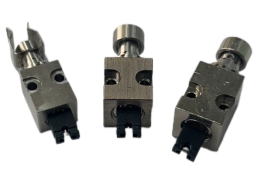
VL Quick-Connect Type Fiber-Coupled Laser
A thickness of 13.5mm can accommodate small heat dissipation fins, with heat dissipation efficiency 15% higher than that of A-4; the thick structure improves the coupling stability between the die and the optical fiber and reduces ultraviolet light loss.
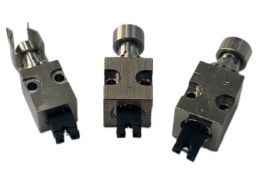
VL Quick-Connect Type Fiber-Coupled Laser
The medium power output is suitable for the high-speed plate-making requirements of UVCTP, while maintaining the compactness of the A-1 package; the voltage range is narrower than that of the 100mW model (4.5-5.5V), and the requirement for power supply stability is lower.
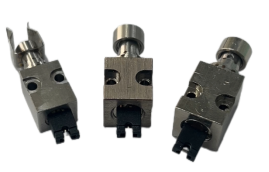
VL Quick-Connect Type Fiber-Coupled Laser
The rectangular structure is suitable for medium-power heat dissipation requirements and can be directly mounted on the metal heat dissipation module of UVCTP machines; no additional fixing brackets are needed during installation, reducing integration costs.
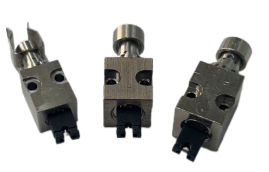
VL Quick-Connect Type Fiber-Coupled Laser
The cube structure facilitates the installation of multi-laser arrays in UVCTP machines (with uniform spacing); the 10mm side length is compatible with industry-standard fixtures, resulting in high integration efficiency.

VL Quick-Connect Type Fiber-Coupled Laser
The thick design can reserve an interface for a temperature control sensor (such as an NTC thermistor) to monitor temperature in real-time and avoid device aging under medium power; it has optimal coupling stability, and the ultraviolet light transmission efficiency is 5% higher than that of A-4.

VL Quick-Connect Type Fiber-Coupled Laser
High power adapts to the ultra-high-speed plate-making requirements of UVCTP. The A-1 package can be embedded in miniaturized high-power optical paths; the spectral width is ≤2.0nm, with excellent monochromaticity and high plate-making precision.
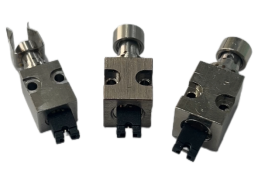
VL Quick-Connect Type Fiber-Coupled Laser
The rectangular planar surface of the cuboid fits tightly with the heat sink of the UVCTP machine, and it can still maintain stable temperature under 500mW high power (avoiding power attenuation); it is vibration-resistant during installation, making it suitable for continuous operation of the production line.
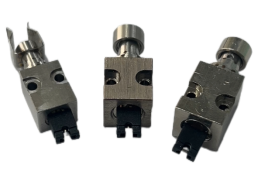
VL Quick-Connect Type Fiber-Coupled Laser
The cube-shaped design offers multi-directional heat dissipation capabilities, ensuring more stable temperature control under a high power of 500mW; the standardized size is compatible with the automated installation of UVCTP production lines, reducing labor costs.

VL Quick-Connect Type Fiber-Coupled Laser
The 405nm series features the highest power combined with optimal heat dissipation. The thick structure can integrate heat dissipation fins, with a temperature fluctuation of ≤±2℃; it has the strongest coupling stability, and the long-term operating power fluctuation is ≤2%/h.
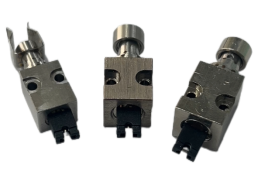
VL Quick-Connect Type Fiber-Coupled Laser
Low-power blue light output, with low phototoxicity, suitable for biology-related scenarios; stable voltage (fixed at 5.3V), simple power supply design; compatible with small core diameter optical fibers of 25-60μm, with strong versatility.

VL Quick-Connect Type Fiber-Coupled Laser
It features the highest-power blue light output in the entire series, suitable for high-energy demand applications; the A-1 package is compact and can be embedded in high-power small devices; it has a lifespan of 10,000 hours, ensuring high reliability during long-term high-power operation.
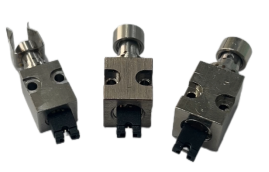
VL Quick-Connect Type Fiber-Coupled Laser
488nm is a commonly used excitation wavelength for fluorescent dyes (such as FITC), suitable for biological and detection scenarios; the power is stable (60mW), avoiding fluorescence bleaching; the spectral width is ≤2.0nm, with excellent monochromaticity and strong excitation specificity.

VL Quick-Connect Type Fiber-Coupled Laser
The green light band has moderate penetrability, making it suitable for shallow detection; the 80mW power balances "excitation intensity - light damage" and is applicable to both biological and industrial scenarios; it is compatible with 25-60μm optical fibers, featuring strong versatility.
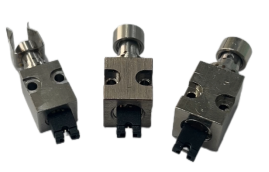
VL Quick-Connect Type Fiber-Coupled Laser
Low-power pure green light, with weak photobleaching effect, suitable for long-term biological observation; wide voltage range (6.6-7.7V), strong power supply compatibility; spectral width ≤ 2.0nm, excellent monochromaticity.
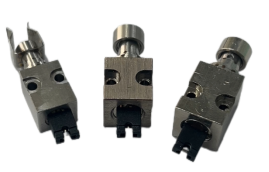
VL Quick-Connect Type Fiber-Coupled Laser
Medium-power pure green light, balancing "excitation intensity - device heat dissipation"; wide current range (160-260mA) for fine power adjustment; suitable for the general needs of UVCTP and biological scenarios.

VL Quick-Connect Type Fiber-Coupled Laser
High-power pure green light, suitable for high-brightness requirements; fixed voltage of 6.5V, simple power supply design; stable power, with a long-term operation fluctuation of ≤2% per hour.
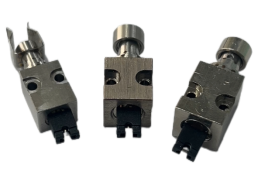
VL Quick-Connect Type Fiber-Coupled Laser
Low operating voltage, low power consumption, suitable for battery-powered devices; strong penetration of red light, suitable for deep detection; 130mW power adapts to medium energy requirements, with high reliability.

VL Quick-Connect Type Fiber-Coupled Laser
Medium to high power red light, with a balance between penetration and energy; low-voltage design, suitable for portable devices; 10,000-hour lifespan, resulting in low long-term operating costs.
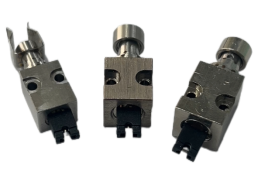
VL Quick-Connect Type Fiber-Coupled Laser
The red light band has extremely low phototoxicity, making it suitable for long-term biological observation; the A-1 package is universal and compatible with most devices; the power is stable, and the UVCTP positioning accuracy is high.
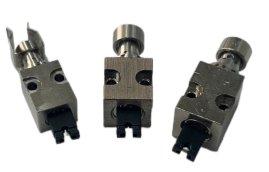
VL Quick-Connect Type Fiber-Coupled Laser
The A-2 package has a diameter of only 6.4mm, making it more compact; it integrates an FC standard interface with high connection stability (thread locking), which prevents fiber optic detachment caused by vibration and is suitable for high-precision optical paths.

VL Quick-Connect Type Fiber-Coupled Laser
The lowest power in the entire series, with extremely low phototoxicity, suitable for long-term observation of living organisms; low light output avoids sample damage; compatible with 25-60μm optical fibers, with strong versatility.
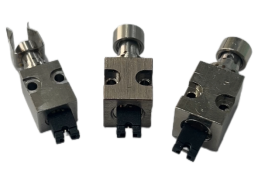
VL Quick-Connect Type Fiber-Coupled Laser
Medium-power red light, balancing "energy - light damage"; low-voltage design with low power consumption; spectral width ≤ 2.0nm, excellent monochromaticity, suitable for specific excitation.
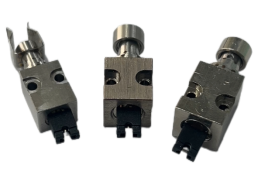
VL Quick-Connect Type Fiber-Coupled Laser
The sample's autofluorescence interference in the near-infrared band is extremely low, making it suitable for Raman spectroscopy analysis; the low-voltage design ensures optimal power consumption; it has strong penetrability and is suitable for deep detection.
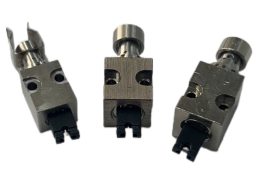
VL Quick-Connect Type Fiber-Coupled Laser
The near-infrared band has strong resistance to ambient light interference, making it suitable for industrial on-site detection; the fixed voltage is 3.0V, resulting in a simple power supply design; the power is stable, ensuring high reliability during long-term operation.
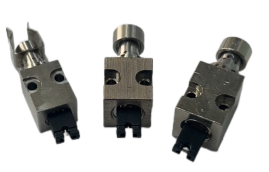
VL Quick-Connect Type Fiber-Coupled Laser
Wide voltage range (1.8-2.6V) with strong power supply compatibility; near-infrared band suitable for long-distance optical path transmission (low optical loss); stable power, suitable for industrial online detection.
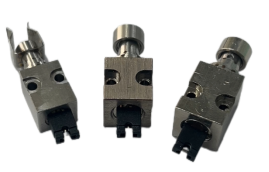
VL Quick-Connect Type Fiber-Coupled Laser
850nm is a commonly used wavelength band in optical fiber communication, suitable for online data transmission; near-infrared has strong anti-interference ability, making it suitable for complex industrial environments; the power is stable, and the long-term operating cost is low.
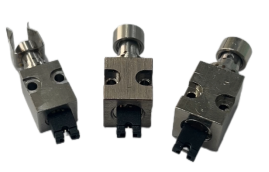
VL Quick-Connect Type Fiber-Coupled Laser
Low threshold current and low starting power consumption; high near-infrared penetrability, suitable for thick material detection; stable power, adaptable to high-speed detection scenarios.
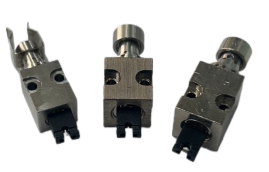
VL Quick-Connect Type Fiber-Coupled Laser
The lowest threshold current in the entire series, enabling quick startup; high near-infrared penetrability, suitable for deep material detection; wide voltage range, strong power supply compatibility.

VL Quick-Connect Type Fiber-Coupled Laser
The entire series has the lowest voltage range, suitable for low-voltage powered devices (such as battery-driven ones); the near-infrared band has no visible light interference, making it suitable for dark field detection; the power is stable, and the reliability of long-term operation is high.

VL Quick-Connect Type Fiber-Coupled Laser
The entire series features the lowest threshold current and extremely low starting power consumption; 1064nm is a commonly used wavelength in laser interferometry, suitable for precision measurement; it has a narrow linewidth (≤2.0nm), excellent monochromaticity, and high measurement accuracy.
VL Fiber-Coupled Laser Sources
A stable fiber laser solution with high coupling efficiency, high spot quality, and strong compatibility
- Excellent optical performance
- Wide compatibility
- Rich parameter options
- Reliable stability design

VL Fiber-Coupled Laser Sources
Short-wave laser lithography: 400nm short-wave is suitable for high-precision lithography processes and is used in the production of fine patterns for microelectronic components and semiconductor chips.
Biological fluorescence excitation: Short-wave lasers can effectively excite fluorescent substances in biological samples, and are suitable for biomedical scenarios such as cell imaging and protein detection.
High-precision material processing: 2000mW power can be used for micro-cutting and micro-engraving of materials such as glass and plastic, such as surface processing of precision instrument components.

VL Fiber-Coupled Laser Sources
Precision laboratory experiments: such as optical filtering tests, weak light interference experiments. Low power avoids sample damage, and short wavelengths meet specific optical testing requirements.
Small fluorescence detection equipment: used in portable biosensors and POCT (Point-of-Care Testing) devices to excite fluorescent markers and detect signals.
Miniature projection light source: 405nm laser can be used as the light source for miniature projection equipment. Low power is suitable for portable scenarios, and Gaussian light spots ensure projection clarity.
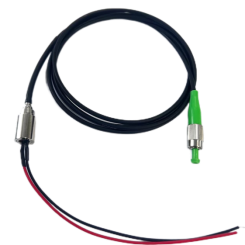
VL Fiber-Coupled Laser Sources
Laser-Induced Fluorescence (LIF) Detection: A power of 300mW can excite more types of fluorescent substances, suitable for the detection of pollutants in environmental water samples and the analysis of food additives.
Marking on Plastic Materials: The 405nm laser has a high absorption rate on plastic surfaces, and a power of 300mW can achieve clear and non-burning marking, such as marking on food packaging and electronic component housings.
Short-Distance Optical Communication Transmission: As a signal light source in short-distance optical communication systems, low power consumption and stable output ensure communication quality.
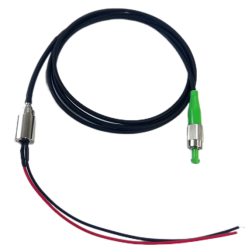
VL Fiber-Coupled Laser Sources
Semiconductor packaging inspection: 405nm laser can penetrate semiconductor packaging materials, and 500mW power can realize defect detection of internal solder joints and circuits in the package (such as cold solder joints, broken wires).
Laser engraving (small parts): Used for fine engraving of small non-metallic parts such as acrylic and wood, such as the processing of customized badges and miniature crafts.
Biomedical diagnosis: For example, as the light source of flow cytometers, it excites fluorescent labels on cell surfaces, and 500mW power ensures signal intensity and detection sensitivity.
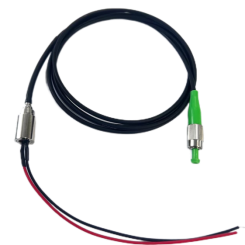
VL Fiber-Coupled Laser Sources
High-power fluorescence imaging: Used for fluorescence imaging of deep biological tissues, 800mW power can penetrate thicker tissues, excite deep fluorescent substances, and is suitable for animal in vivo imaging experiments.
Material surface modification: 405nm laser acts on the surface of metals and ceramics, and 800mW power can realize surface microstructure modification, improving the wear resistance and corrosion resistance of materials.
Laser marking (high contrast): For hard-to-mark materials such as glass and metal sheets, 800mW power can achieve high-contrast marking, such as QR codes and serial number marking on electronic devices.
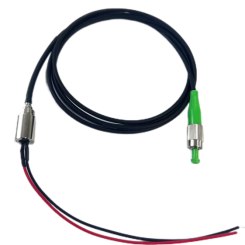
VL Fiber-Coupled Laser Sources
Non-metallic material cutting: Used for medium-thickness cutting of non-metallic materials such as acrylic, plastic sheets, and fabrics. The 445nm blue light has high absorption rate, and the 1000mW power ensures fast cutting speed and smooth edges.
Laser display (high brightness): As a blue light source for large-scale laser display equipment, the 1000mW power can provide high-brightness output, suitable for scenarios such as outdoor displays and stage lighting.
Material welding (micro plastic parts): Such as the welding of micro plastic interfaces in medical consumables, blue light lasers can achieve precise heating to avoid overheating damage to surrounding structures.
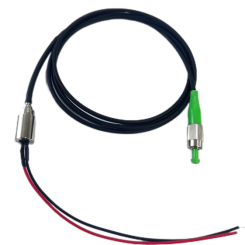
VL Fiber-Coupled Laser Sources
Miniature sensor light sources: such as light sources for fiber optic displacement sensors and blue light spectrum sensors. A power of 60mW can provide stable signals, meeting the low power consumption requirements of miniature devices.
Low-light laboratory experiments: such as blue light interference experiments and photocatalytic reactions (low-intensity excitation). Low power can precisely control reaction conditions to avoid over-excitation.
Portable fluorescence detectors: used for on-site environmental testing (such as detection of algal toxins in water quality). 450nm blue light excites fluorescence, and 60mW power meets the battery life and detection needs of portable devices.

VL Fiber-Coupled Laser Sources
High-power laser marking (metal/non-metal): Used for deep marking on large metal components and thick-walled plastic parts. A power of 3500mW can achieve fast and clear deep marking, such as part numbers of engineering machinery.
Material surface ablation: Such as the ablation of impurities on the surface of semiconductor wafers and the removal of metal surface coatings. High-power lasers can efficiently remove target substances without damaging the substrate.
Laser welding (medium-thick materials): Used for welding plastics and thin metal sheets with a thickness of 1-3mm. The 455nm blue light has high absorption rate, and the welding strength and sealing performance are good.
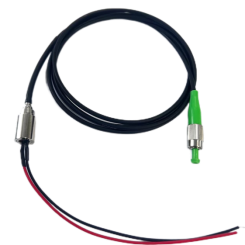
VL Fiber-Coupled Laser Sources
Phosphor excitation (display field): As a phosphor excitation light source for laser backlight displays, 465nm lasers can efficiently excite yellow phosphors to achieve white light output, which is suitable for high-end monitors and projectors.
Photosensitive resin curing: Used in 3D printing (SLA technology), 465nm lasers have a fast curing speed for specific photosensitive resins. A power of 1000mW can improve printing efficiency, making them suitable for medium-sized 3D printing equipment.
Spectral analysis (special substances): For example, in the ultraviolet-visible spectral analysis of certain organic compounds, the 465nm band can capture specific absorption peaks, which is used for qualitative and quantitative detection of substances.
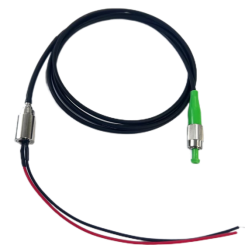
VL Fiber-Coupled Laser Sources
Light source for biological fluorescence microscopy: Used for fluorescence imaging of cells and bacteria. A 488nm laser excites dyes such as FITC, with a 50mW power to avoid photodamage to samples, and is compatible with inverted microscopes and confocal microscopes.
Flow cytometer (low throughput): Used in small flow cytometers to detect fluorescent labels on cell surfaces. A 50mW power ensures signal clarity, suitable for laboratory testing needs with low sample volumes.
Fluorescence detection of trace substances: Such as the detection of fluorescent signals in enzyme-linked immunosorbent assay (ELISA). A 488nm laser excites fluorescent substrates, and a 50mW power improves detection sensitivity.
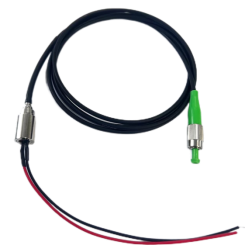
VL Fiber-Coupled Laser Sources
Deep imaging of living cells: Used for fluorescence imaging of thick tissue sections (such as brain tissue, tumor tissue). The 505nm green light has good penetrability, and a 50mW power can excite deep cell fluorescence, which is compatible with confocal microscopes.
Fluorescence in situ hybridization (FISH) experiments: Detect specific gene sequences on chromosomes. The 505nm laser excites dyes such as Cy3, and its high wavelength purity can reduce non-specific signals and improve detection accuracy.
Miniature biosensors: Such as fiber optic biosensors for detecting specific proteins in blood. The 50mW green light provides a stable excitation signal, which is compatible with portable medical testing equipment.
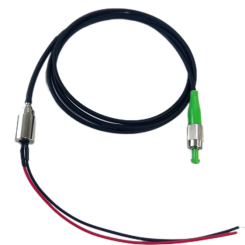
VL Fiber-Coupled Laser Sources
Laser interferometer light source: Used for precision optical measurement (such as detection of part flatness and parallelism). The PD+ function real-time corrects power fluctuations, ensures the stability of interference fringes, and improves measurement accuracy.
Optical communication power monitoring node: Serves as a signal light source in short-distance optical communication systems, and monitors output power through PD+ to ensure stable communication signal strength, compatible with optical fiber communication testing equipment.
Precision spectral analysis: Such as atomic absorption spectroscopy and molecular fluorescence spectroscopy analysis. The 60mW stable power can reduce spectral baseline drift and improve the repeatability of analysis results.
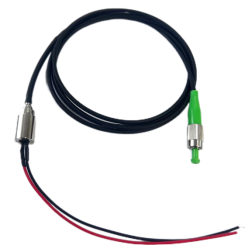
VL Fiber-Coupled Laser Sources
Fluorescent immunochromatographic detection: Used in rapid detection devices for novel coronavirus, tumor markers, etc. 80mW green light excites fluorescent microspheres with high signal intensity, suitable for portable POCT devices.
Laser indication (high precision): As a positioning indicator light source for industrial equipment (such as machine tools, robot welding positioning), 520nm green light has high visibility to the naked eye, and 80mW power can achieve clear indication at long distances.
Light stimulation of biological tissues: Used in neuroscience experiments, 80mW green light stimulates photosensitive proteins (such as Channelrhodopsin), controls neuronal activity, and is suitable for optogenetics experiments in living animals.
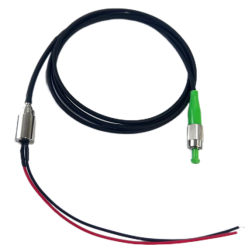
VL Fiber-Coupled Laser Sources
Laser treatment (dermatology): Used for the treatment of pigmented diseases (such as freckles, café-au-lait spots). The 520nm green light has a high absorption rate for melanin, and a power of 200mW can gently remove pigments and reduce skin damage.
Material micromachining (transparent materials): Such as the production of microtextures on glass surfaces and the etching of sapphire substrates. The 200mW green light can achieve precise machining, suitable for the manufacturing of optical components.
Laser display (medium-sized equipment): As a green light source for medium-sized laser projectors, the 200mW power can provide sufficient brightness, meeting the projection needs of scenarios such as conference rooms and classrooms.
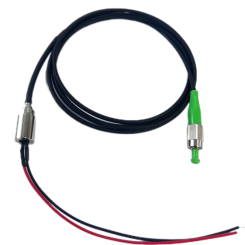
VL Fiber-Coupled Laser Sources
High-brightness laser display: Used in large outdoor laser display screens and stage laser lights. The 1000mW green light can provide high-brightness, long-distance visible output, meeting the display needs in strong light environments.
Metal sheet welding: Used for welding 0.1-0.5mm thick metal sheets such as copper and aluminum. The 520nm green light has moderate absorption rate for metals, and the 1000mW power can achieve fast welding with high weld strength.
Laser cleaning (precision components): Such as cleaning tiny contaminants on the surface of semiconductor chips and optical lenses. The 1000mW green light can efficiently remove impurities without damaging the surface of the components.

VL Fiber-Coupled Laser Sources
Precision length measurement: Used in laser interferometric length measuring instruments, the 633nm wavelength is one of the standard wavelengths for length metrology. The 70mW power ensures stable interference signals, making it suitable for dimensional calibration in mechanical manufacturing.
Fiber optic communication testing: As a test light source for 633nm band optical communication systems, low power can simulate signal transmission, suitable for performance testing of communication equipment.
Laser collimation (high precision): Used for installation and calibration of large-scale equipment (such as machine tool guides, bridge steel structures). The 633nm red light has good collimation, and the 70mW power can achieve long-distance precise collimation.
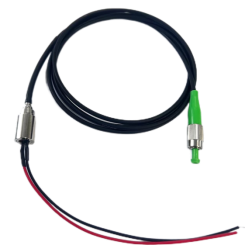
VL Fiber-Coupled Laser Sources
Laser indication (industrial/civil): Used as the indicator light source for laser levels and laser rangefinders. The 638nm red light has high visibility, and the 120mW power enables long-distance indication, suitable for construction and decoration scenarios.
Barcode/QR code scanning: As the light source for barcode scanning equipment, the 120mW red light can quickly excite barcode reflection signals, suitable for supermarket checkout and logistics sorting equipment.
Low-light imaging (industrial inspection): Used for detecting scratches and defects on metal surfaces. The 120mW red light can enhance the contrast between defects and the substrate, suitable for automated inspection lines.

VL Fiber-Coupled Laser Sources
Automated production line positioning: Positioning light source for robot assembly and part sorting. The PD+ function ensures stable power. The 150mW red light has high visibility, suitable for high-speed automated scenarios.
Laser engraving (light-colored materials): Used for surface engraving of light-colored plastics and wood. The 638nm red light has moderate absorptivity, and the 150mW power can achieve clear patterns, suitable for customized product processing.
Spectral analysis (red light absorption): Such as spectral detection of moisture and sugar in food. The 638nm red light can capture specific absorption peaks, and the PD+ function ensures stable excitation power, improving analysis accuracy.

VL Fiber-Coupled Laser Sources
Long-distance laser ranging: Used for outdoor surveying and mapping, and UAV ranging. The 638nm red light has low atmospheric transmission loss, and the 1000mW power can achieve kilometer-level ranging, which is suitable for geographic information collection scenarios.
High-power laser marking (metal): Used for marking metal materials such as steel and aluminum alloys. The 1000mW power can achieve deep marking, which meets the needs of numbering and traceability of heavy industrial components.
Laser heat treatment (surface): Used for metal surface quenching and tempering. The 638nm red light can accurately heat the surface, and the 1000mW power realizes rapid heat treatment to improve surface hardness.
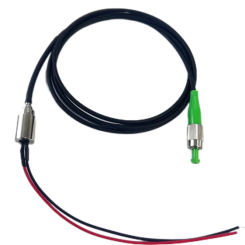
VL Fiber-Coupled Laser Sources
Medical physical therapy (low-intensity laser): Used for pain relief and wound healing. The 660nm red light can promote cell metabolism, with a gentle 80mW power that causes no damage, suitable for rehabilitation medical equipment.
Biological tissue culture: Used for light-regulated cell proliferation (such as stem cell culture). The 660nm red light can regulate cell activity, and the 80mW power avoids cell damage, suitable for biological laboratory culture equipment.
Light source for micro-spectrometers: Used in portable near-infrared spectrometers (660nm band). The 80mW power provides stable excitation, and the high wavelength purity improves the accuracy of spectral analysis, suitable for on-site substance detection.
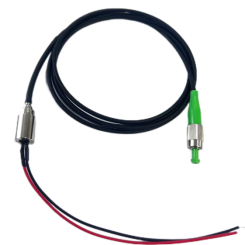
VL Fiber-Coupled Laser Sources
Miniature fiber optic sensors: Such as the light source for miniature pressure sensors and temperature sensors, 10mW weak light can provide stable signals, suitable for wearable devices and implantable medical sensors.
Weak light interference experiments: Used in basic optical research (such as weak light quantum interference), 10mW power can precisely control light intensity to avoid strong light interfering with experimental results.
Laser indication (miniature devices): Used for positioning indication in miniature electronic devices (such as positioning internal components of earphones and watches), 10mW power is safe and does not affect other parts of the device.
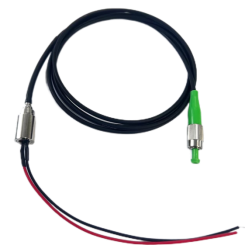
VL Fiber-Coupled Laser Sources
High-power laser marking (thick non-metallic materials): Used for deep marking on thick-walled plastics and rubber parts. The 670nm red light has high absorption rate, and the 1000mW power enables rapid marking, suitable for auto parts and pipeline identification.
Laser weeding (agriculture): Used for weed removal in precision agriculture. The 670nm red light has high absorption rate for weed chlorophyll, and the 1000mW power can kill weeds without damaging crops, suitable for smart agricultural equipment.
Material melting (small-scale): Used for micro-melting of low-melting-point metals (such as tin, lead). The 1000mW power can precisely control the melting range, suitable for welding of micro electronic components.
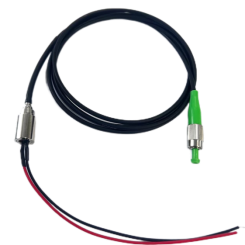
VL Fiber-Coupled Laser Sources
Near-infrared biological imaging (shallow layer): Used for subcutaneous blood vessel imaging and shallow tumor detection. The 685nm laser has good penetrability, and the 40mW power avoids tissue damage, making it suitable for medical diagnostic equipment.
Fluorescent immunoassay (near-infrared): Used for the excitation of near-infrared fluorescent dyes (such as Cy5.5). The 40mW power can provide stable signals, suitable for high-sensitivity medical detection.
Environmental monitoring (low light): Used for the detection of dissolved organic matter in water. The 685nm laser can excite specific fluorescence, and the 40mW power is suitable for portable environmental monitoring equipment.
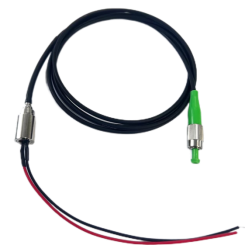
VL Fiber-Coupled Laser Sources
Raman spectroscopy analysis: Used for qualitative analysis of material components and pollutant detection (such as pesticide residues in food, pharmaceutical ingredient analysis). 785nm laser can suppress the fluorescence background, and 100mW power ensures the intensity of Raman signals.
Near-infrared imaging (industrial): Used for detecting internal defects in semiconductor chips. 785nm laser can penetrate the chip packaging, and 100mW power enables clear imaging, suitable for quality inspection in electronic manufacturing.
Medical diagnosis (near-infrared): Used for early detection of skin cancer. 785nm laser can excite tissue Raman signals, and 100mW power allows non-destructive detection, suitable for dermatological diagnostic equipment.
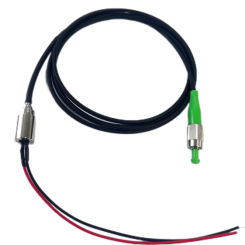
VL Fiber-Coupled Laser Sources
Medical physiotherapy: Used for relieving joint pain and muscle strain. The 808nm near-infrared laser can penetrate deep into tissues, and the 100mW power generates a mild thermal effect to promote blood circulation, suitable for rehabilitation physiotherapy equipment.
Infrared imaging light source: As an auxiliary light source for infrared thermal imaging equipment, the 100mW power can enhance the infrared signal of the target object, improve imaging clarity, and is suitable for security and night vision equipment.
Laser pumping (small-sized): Used for pumping small solid-state lasers. The 808nm laser is a commonly used pumping wavelength, and the 100mW power is suitable for small laser systems in laboratories.
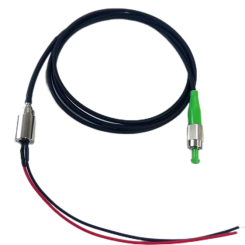
VL Fiber-Coupled Laser Sources
Short-distance fiber optic communication: Used for short-distance (≤1km) signal transmission in industrial control and building communication. The 830nm laser has low transmission loss, and the 150mW power ensures stable signals, compatible with industrial Ethernet devices.
Industrial infrared detection: Used for detecting internal defects in metal materials (such as cracks, bubbles). The 830nm laser can penetrate thin metal layers, and the 150mW power enables clear imaging, compatible with automated quality inspection lines.
Near-infrared spectroscopy analysis: Used for detecting the quality of agricultural products (such as grain moisture, oil content). The 830nm laser can capture absorption peaks of specific components, and the 150mW power improves analysis sensitivity.

VL Fiber-Coupled Laser Sources
Short-distance communication in data centers: Used for high-speed data transmission between servers and between cabinets (such as 10Gbps Ethernet). The 850nm laser has low transmission loss, and the 150mW power ensures the signal coverage range, making it suitable for cloud computing data centers.
Infrared security monitoring: Used as an auxiliary light source for night security cameras. The 850nm near-infrared laser is invisible, and the 150mW power can improve the monitoring distance and clarity, making it suitable for security in residential areas and factory areas.
Near-infrared imaging (medical): Used for fundus imaging and oral tissue imaging. The 850nm laser has good penetrability, and the 150mW power enables non-destructive testing, making it suitable for ophthalmic and dental diagnostic equipment.

VL Fiber-Coupled Laser Sources
Lidar (medium-range): Used for UAV obstacle avoidance, autonomous driving (low-speed scenarios), and outdoor mapping. The 905nm laser has strong anti-sunlight interference capability, and the 150mW power can achieve a ranging distance of 50-200m, suitable for consumer-grade LiDAR equipment.
Near-infrared security (long-range): Used for long-distance security monitoring at borders and oil fields. The 905nm laser can achieve long-distance detection, and the 150mW power is suitable for infrared warning systems.
Industrial ranging (harsh environments): Used for ranging of large equipment (such as cranes and stackers) in mines and ports. The 905nm laser is resistant to dust and water vapor interference, and the 150mW power ensures ranging stability.
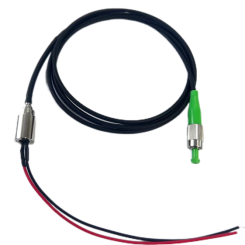
VL Fiber-Coupled Laser Sources
Covert security monitoring: Used for night vision monitoring in military and confidential places. The 940nm laser has no red exposure, and a power of 150mW can achieve long-distance covert lighting, compatible with special security equipment.
Infrared face recognition: Used for face recognition in night or low-light environments. The 940nm laser can enhance facial feature signals, and a power of 150mW ensures recognition accuracy, compatible with access control and attendance equipment.
Near-infrared non-destructive testing: Used for detecting internal defects in plastics and glass. The 940nm laser has good penetration, and a power of 150mW can achieve clear imaging, compatible with quality inspection in the packaging industry.

VL Fiber-Coupled Laser Sources
Medical laser treatment: Used for minimally invasive treatments in otolaryngology and dermatology (such as rhinitis, skin hemangiomas). The 980nm laser enables precise cutting and hemostasis, with a 200mW power ensuring minimal trauma and quick recovery, compatible with specialized medical equipment.
Solid-state laser pumping: Used for pumping solid-state lasers such as Nd:YAG. The 980nm laser has high pumping efficiency, and its 200mW power is compatible with medium-sized solid-state laser systems in laboratories.
Near-infrared spectroscopy analysis (high sensitivity): Used for detecting trace components in pharmaceuticals and food. The 980nm laser can excite weak absorption signals, and its 200mW power enhances detection sensitivity, compatible with high-end analytical instruments.
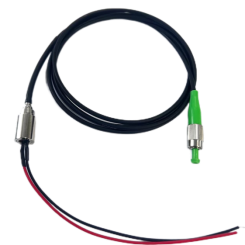
VL Fiber-Coupled Laser Sources
Near-infrared spectroscopy analysis (conventional components): Used for detecting conventional components in grain and feed (such as protein and cellulose). The 1064nm laser can capture characteristic absorption peaks, and the 40mW power is suitable for portable spectrometers.
Short-distance laser ranging (high precision): Used for high-precision short-distance (≤50m) ranging in laboratories and industrial workshops. The 1064nm laser has strong anti-interference ability, and the 40mW power ensures the ranging accuracy reaches the millimeter level.
Optical component testing: Used for testing the transmittance and reflectance of lenses and prisms. The 1064nm laser is suitable for near-infrared optical component detection, and the 40mW power avoids component damage, making it suitable for quality inspection in optical manufacturing.
VL-PM Fiber-Coupled Laser Sources
Focusing on "high precision, high stability, and controllable polarization"
- High stability and polarization-maintaining characteristics, suitable for polarization-sensitive scenarios
- High-precision optical performance, suitable for precision applications
- Strong compatibility and standardized design reduce supporting costs
- Strict safety and protection design ensures long-term reliable operation
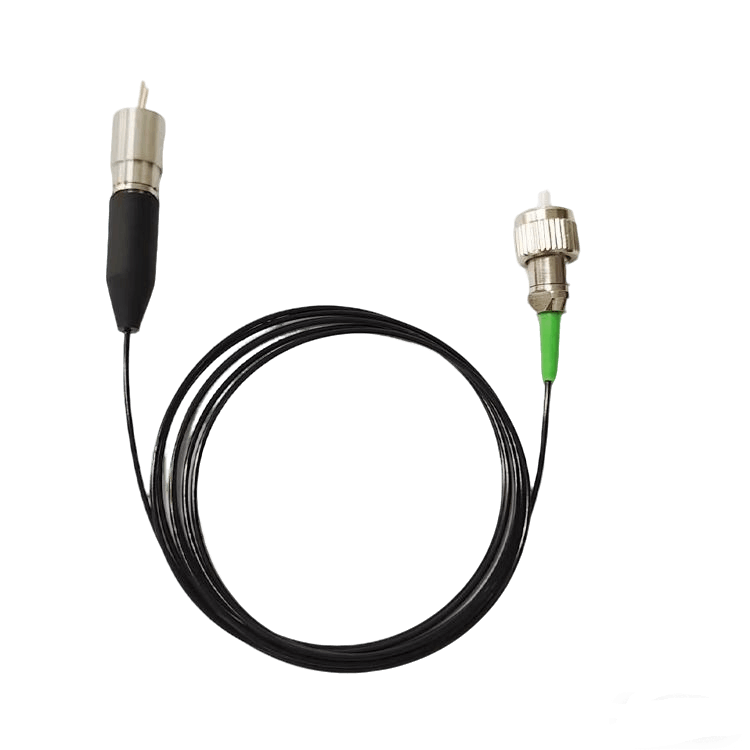
VL-PM Fiber-Coupled Laser Sources
Advantages in power and polarization: 80mW high power meets medium and high power requirements (such as laser direct writing, high-intensity fluorescence excitation), with an extinction ratio of 18dB that far exceeds other models, ensuring more stable polarization states.
Low voltage adaptation: Operating voltage ranges from 5.0V to 6.0V, which is lower than that of the 488nm and 505nm models. It can be adapted to more conventional current sources, reducing the cost of power supply equipment.
Excellent spot quality: 3μm thin-core polarization-maintaining fiber + Gaussian spot output, suitable for applications with high requirements on spot size and uniformity (such as micro-structure processing).
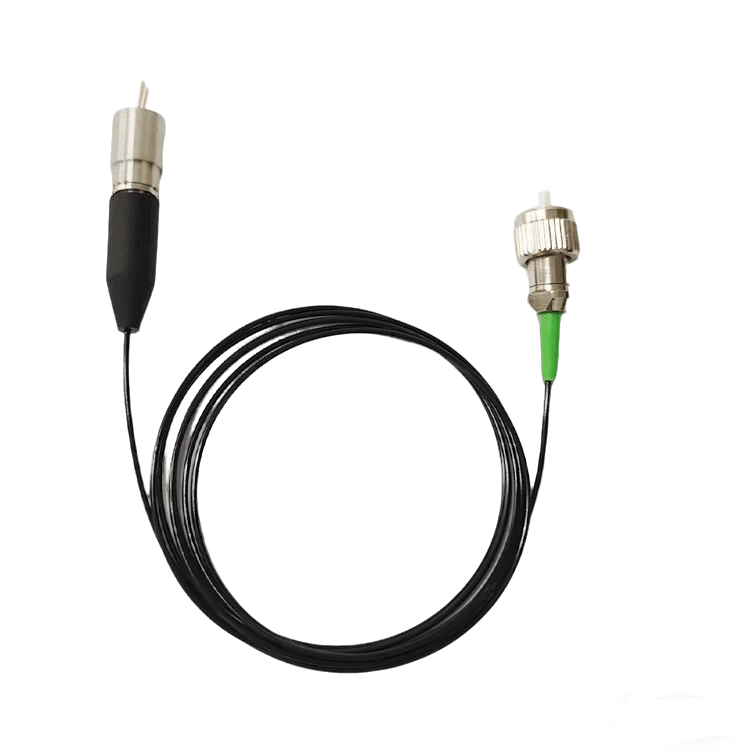
VL-PM Fiber-Coupled Laser Sources
Wavelength characteristic adaptation: 450nm blue-violet light is suitable for the absorption and excitation of certain special materials, filling the wavelength gap between 405nm and 488nm.
Low power consumption and heat dissipation: 30mW power + 5.5-6.0V low operating voltage, low power consumption, stable operation under conventional heat dissipation conditions, no additional refrigeration equipment required, suitable for miniaturized system integration.
Comprehensive safety tips: anti-static and optical fiber bending requirements reduce the risk of equipment damage or personal injury caused by operational errors.
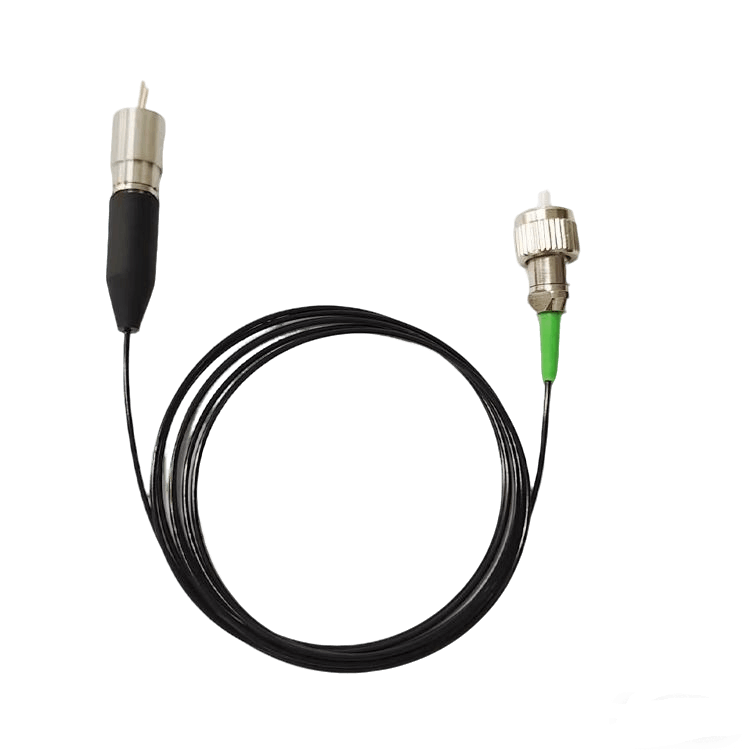
VL-PM Fiber-Coupled Laser Sources
Excellent spot quality: Integrated single-mode fiber coupling + conformal gradient index lens, the output spot conforms to Gaussian distribution, with high coupling efficiency and reduced light loss.
Clear electrostatic protection prompts: It clearly requires shorting the pins after use to reduce the risk of electrostatic breakdown and extend the device's service life.
Good environmental adaptability: Although sensitive to temperature, it can work stably under conventional heat dissipation conditions without complex refrigeration equipment, resulting in low usage cost.

VL-PM Fiber-Coupled Laser Sources
Wide wavelength applicability: 488nm is a commonly used wavelength for biological fluorescence excitation, which can match fluorescein without the need for customized special light sources.
Good polarization stability: The polarization-maintaining fiber design, with an extinction ratio of 16dB, can stably maintain the laser polarization state, making it suitable for high-precision applications sensitive to polarization (such as polarization imaging).
Easy operation: The universal connector can directly match most fiber flanges and collimating lenses without additional adaptation components, reducing the threshold for use.

